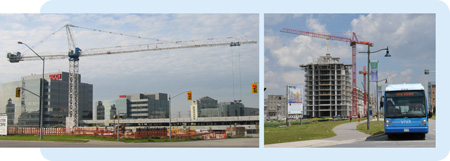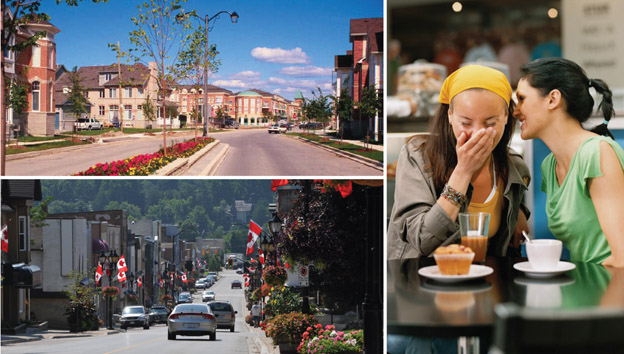
When you think of York Region, what comes to mind for you? The comfortable, tree-lined family-friendly neighbourhoods of Aurora or Vaughan? Or maybe the increasingly urban appearance of Markham’s new development areas, with many large head offices employing thousands of professionals? Or maybe the quaint, walking-scale downtowns of Newmarket, Unionville or old Richmond Hill? Not to mention the lovely green countryside that wraps all around our towns, offering recreation, productive farmland, and rural lifestyles. Maybe you think of how some downtown sidewalk areas could be more inviting, how much longer it’s taking you to get to work these days, or how it’s hard to get from A to B in York Region if you don’t have a car.
It’s probably safe to say that everyone in York Region has a view of what their home community means to them, and what they’d like it to be in the future. If asked, most of us could list the things we love, and the things we’d love more of (or in the case of some things, like traffic gridlock, less of!)
So when it came time to update York Region’s Official Plan, residents were asked to describe their vision for the York Region of the future. The input for the Official Plan makes a great snapshot of what people want out of their home in York Region, and what matters to them, which include:
- Let’s be green;
- Let’s try to live and work in the same community;
- Let’s make it more beautiful;
- Let’s make it lively, with lots of interesting things to do;
- Let’s live in neighbourhoods that are designed to let us get to know our neighbours;
- Let’s have more choices in housing availability, to accommodate every member of our community – families, single people, young and old;
- And to tie it all together – let’s make it easier to get around, with or without a car.
That’s what people said, and then planners had to figure out how to make that vision come to life, looking twenty and even thirty or more years into the future. That vision is captured in a hefty document that is York Region’s Official Plan.
So what’s all this got to do with vivaNext? I’m going to tell you more over the next couple of blog posts, but here’s a hint: one of the key things that’s going to help achieve that vision of a greener, livelier, more compact York Region, is a rapid transit network. More than just transit, the vivaNext plan will help to shape our community into the future, and help bring those things people want – more choice, more opportunity, more green, more fun– to life. So whether or not you take transit, having vivaNext is very good news, and will be great for our community.

 Remember when you were a kid in a sandbox, and you could have endless fun with sticks and pebbles, building imaginary cities and towns, with houses, stores, roads and schools. You would make sure your city had everything people would want (including great rapid transit to zip people from the drawbridge to the castle), everything would be perfectly organized, and nothing would be too far away.
Remember when you were a kid in a sandbox, and you could have endless fun with sticks and pebbles, building imaginary cities and towns, with houses, stores, roads and schools. You would make sure your city had everything people would want (including great rapid transit to zip people from the drawbridge to the castle), everything would be perfectly organized, and nothing would be too far away.


